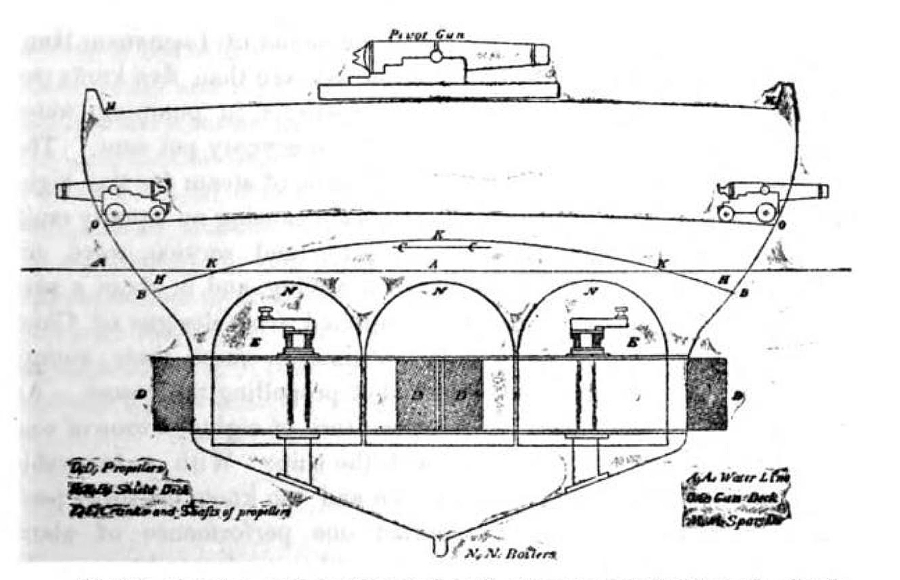 The Washington Navy Yard has not only produced a multitude of ships during its life, but has also hosted many, many more. Often, expermimental boats would be brought here, to be shown off to the powers that be at the Navy Department. One such boat – with what would today be a rather disturbing name – was The Germ.
The Washington Navy Yard has not only produced a multitude of ships during its life, but has also hosted many, many more. Often, expermimental boats would be brought here, to be shown off to the powers that be at the Navy Department. One such boat – with what would today be a rather disturbing name – was The Germ.
In June, 1841, the citizens of Washington were astounded to see a ship coming up the Anacostia that had no obvious means of locomotion. No sails on top, no oars on the side, and while it was obviously a steam ship, there were none of the usual large wheels on either side of the ship to propel it through the water. She moved (according to an August 7 article in the NY Herald) “with great velocity, and perfectly noiseless, with scarcely any rippling of the water. She turn[ed] easily, almost upon her own center.”
The ship, which put up at the Navy Yard, was The Germ and its revolutionary new propulsion system was one that the Secretary of the Navy, George Edmund Badger, hoped would soon be used for many more naval ships. The Hunter wheel, as it was known, was significantly different from the screws that John Ericsson was working on. It consisted of two paddle wheels, turned sideways and installed into the hull of the ship, below the waterline. Lieutenant William W. Hunter had bought the patents from Benjamin Harris, and had set about making them work, and requested – and received – the support of Secretary Badger, who had recently taken office.

Drawing showing the Hunter Wheel, mounted below the water line of the ship. From Frank Bennett’s 1897 tome The Steam Navy of the United States (Google Books)
The Germ was not a large vessel – much as the name suggested, it was simply the starting point for a full-scale ship. It was 50 feet long, and had a two foot draft. Its total power was six horsepower, which was, however, enough to drive the ship “9 miles per hour” (emphasis in the original article, published in the the Madisonian on June 12, 1841) The ship had thus managed to make the 240-mile trip up the Chesapeake Bay from the Gosport Navy Yard (Today the Norfolk Navy Ship Yard) in 32 hours, and in Washington, it showed itself to be adept at steaming up and down the old canal.
The Madisonian waxed eloquent in its description, insisting that “their value to the nation as a means of extinguishing effectually the whole steam armament of the ordinary construction of any nation which may attack us, will be beyond computation.” (ie, “they’re better than whatever anyone else has”)
The paper wisely chose to include Ericsson’s screws in this paean, and thus were only half-wrong when the Hunter wheel showed itself to be a bit of a dud. While The Germ traveled successfully all around the Eastern Seaboard, and as far as the Great Lakes, it used an enormous amount of coal in doing so. The problem was that the water that sloshed around the interior of the ship in the course of operation increased the friction dramatically, and required a significant portion of the energy being created by the ship’s engines to overcome.
Nonetheless, several other ships were built with the Hunter Wheel, including some at the Washington Navy Yard. All were eventually refitted with other forms of propulsion, ending Hunter’s dream of riches from his patent. But for a few days in June, 1841, it seemed that the future was to be seen at the Navy Yard.
